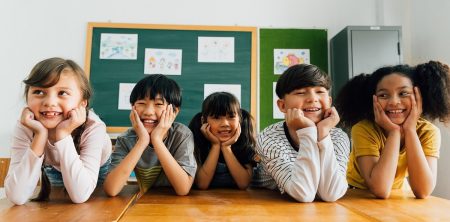The modern teacher faces unprecedented challenges in addressing not only academic needs but also the social-emotional development of students. In this complex educational landscape, kids animated shows have emerged as powerful tools for social-emotional learning (SEL), offering carefully crafted narratives that help children understand and navigate their feelings, relationships, and social responsibilities in accessible, age-appropriate ways.
Educational researchers have identified strong correlations between social-emotional competence and academic achievement, making SEL an essential component of comprehensive education. Animated programs designed with developmental psychology principles in mind provide teachers with ready-made scenarios that illustrate complex emotional concepts through relatable characters and situations. These visual narratives create safe spaces for children to explore challenging emotions and social scenarios without personal vulnerability.
The effectiveness of animation for SEL instruction stems from several unique characteristics of the medium. Character design in quality animated shows often employs exaggerated facial expressions that help children who struggle with subtle social cues recognize and interpret emotions more easily. This visual clarity provides valuable scaffolding for students developing emotional literacy, particularly those with neurodivergent learning profiles who may find real-world social signals confusing or overwhelming.
Narrative structure in educational animation typically presents clear cause-and-effect relationships between actions, emotions, and consequences. This simplified representation helps young viewers identify patterns in social interactions that they can later apply to more complex real-world situations. Teachers can pause these narratives at critical decision points to facilitate class discussions about alternative choices and potential outcomes, developing critical thinking alongside emotional intelligence.
Well-designed animated content addresses core SEL competencies identified by educational frameworks. Self-awareness emerges as characters verbalize internal thoughts and emotions, making these invisible processes visible. Self-management skills appear in episodes where characters implement strategies to regulate strong feelings. Social awareness develops through diverse character perspectives and explicit empathy messaging. Relationship skills feature prominently in conflict resolution storylines. Responsible decision-making unfolds as characters weigh options and consider impacts on themselves and others.
Classroom implementation strategies have evolved significantly as educators recognize animation’s potential for SEL instruction. Effective teachers use character journals where students document and reflect on emotional situations presented in shows. Role-playing activities inspired by animated scenarios allow children to practice social skills in low-stakes environments. Pause-and-predict discussions during viewing develop anticipatory thinking about social consequences. Follow-up art projects enable students to design their own characters facing similar challenges, reinforcing learned concepts through creative expression.
Cultural representation within animated SEL content has improved dramatically, featuring diverse family structures, cultural practices, and individual differences. This inclusive approach helps normalize diversity while providing windows into experiences different from students’ own lives. Teachers leveraging these representations can foster inclusive classroom communities where differences are viewed as strengths rather than deficits, laying groundwork for positive civic engagement later in life.
For students with traumatic backgrounds, animated narratives provide emotional distance that makes difficult topics more approachable. When characters experience challenges similar to real-life traumas, children can process these experiences indirectly, often making connections to their own lives when they feel emotionally ready rather than when directly prompted. Sensitive teachers recognize these moments as opportunities for deeper connection while respecting students’ emotional boundaries.
The universal language of animation transcends linguistic barriers, making it particularly valuable in classrooms with diverse language backgrounds. Emotional expression, body language, and situational humor communicate effectively even when verbal comprehension varies. This accessibility ensures that crucial social-emotional learning reaches all students regardless of English language proficiency.
Pedagogical approaches to SEL animation have become increasingly sophisticated. The most effective implementations pair viewing with structured activities that connect screen scenarios to classroom realities. Community circles following episodes create space for personal reflections. Problem-solving workshops apply strategies modeled by characters to authentic classroom conflicts. Character strength inventories help students identify positive qualities demonstrated in shows and recognize these same attributes in themselves and classmates.
Parental partnership strengthens these efforts when teachers communicate the specific SEL objectives addressed through animated content. By sharing discussion questions and follow-up activities families can implement at home, educators extend learning beyond the classroom. This consistency between school and home environments reinforces key concepts while giving parents valuable tools for navigating challenging behaviors or emotions with their children.
Assessment of social-emotional learning presents unique challenges compared to academic content. Innovative teachers utilize observational protocols to document behavioral changes following animated SEL instruction. Student self-reflection tools capture internal growth that might not be immediately visible in behavior. Scenario-based assessments measure students’ ability to apply learned concepts to novel situations. These multifaceted approaches provide more comprehensive understanding of SEL progress than traditional testing methods.
Professional development specifically addressing animation-based SEL instruction helps teachers maximize these resources. Workshops focusing on facilitation techniques, discussion strategies, and appropriate scaffolding ensure that viewing experiences translate into meaningful learning. Collaborative planning allows educators to share successful implementations and troubleshoot challenges across grade levels and subject areas.
The neuroscience supporting animation’s effectiveness for SEL instruction continues to emerge. Research indicates that character-driven narratives activate neural networks associated with social cognition and empathy. The combination of visual, auditory, and narrative elements creates multiple pathways for information processing, strengthening neural connections associated with emotional regulation and social understanding. These biological foundations explain why well-designed animated content often succeeds where direct instruction falters.
Critics who dismiss animation as mere entertainment overlook these substantial educational benefits. Progressive educators recognize that engagement serves as the foundation for all learning, and few mediums engage young minds as effectively as quality animation. By strategically harnessing this engagement for deliberate SEL objectives, teachers transform what might be perceived as passive consumption into active learning experiences with lasting impact.
As schools continue navigating complex social landscapes and addressing rising mental health concerns among children, animation-supported SEL instruction offers accessible, systematic approaches to building emotional resilience and social competence. The most successful educational environments recognize that these skills are not supplementary but fundamental to academic achievement and lifelong success.

